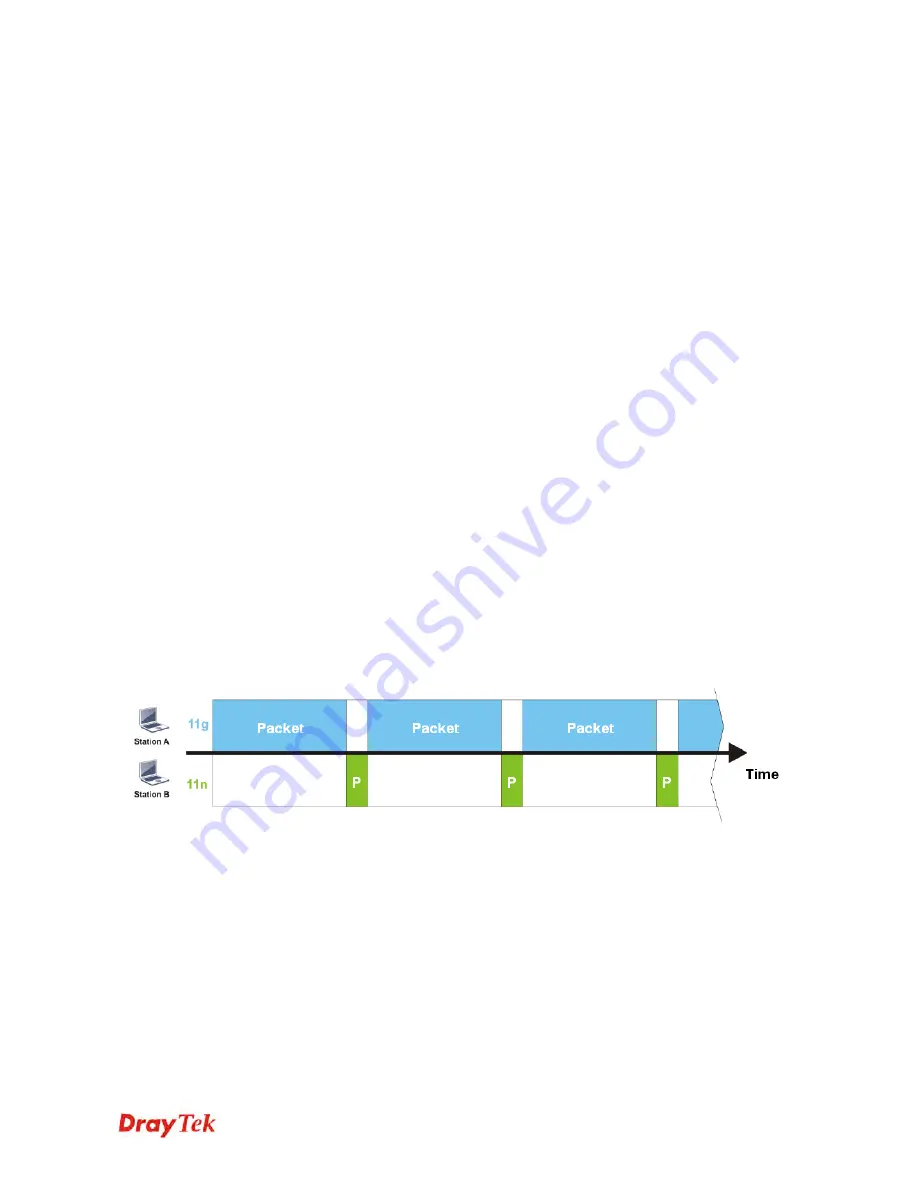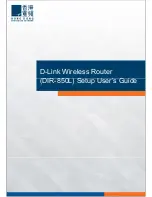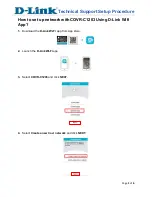
VigorAP 910C User’s Guide
133
3
3
.
.
9
9
.
.
1
1
0
0
A
A
i
i
r
r
t
t
i
i
m
m
e
e
F
F
a
a
i
i
r
r
n
n
e
e
s
s
s
s
Airtime fairness is essential in wireless networks that must support critical enterprise
applications.
Most of the applications are either symmetric or require more downlink than uplink capacity;
telephony and email send the same amount of data in each direction, while video streaming
and web surfing involve more traffic sent from access points to clients than the other way
around. This is essential for ensuring predictable performance and quality-of-service, as well
as allowing 802.11n and legacy clients to coexist on the same network. Without airtime
fairness, offices using mixed mode networks risk having legacy clients slow down the entire
network or letting the fastest client(s) crowd out other users.
With airtime fairness, every client at a given quality-of-service level has equal access to the
network's airtime.
The wireless channel can be accessed by only one wireless station at the same time.
The principle behind the IEEE802.11 channel access mechanisms is that each station has
equal probability
to access the channel. When wireless stations have similar data rate, this
principle leads to a fair result. In this case, stations get similar channel access time which is
called airtime.
However, when stations have various data rate (e.g., 11g, 11n), the result is not fair. The
slow stations (11g) work in their slow data rate and occupy too much airtime, whereas the
fast stations (11n) become much slower.
Take the following figure as an example, both Station A(11g) and Station B(11n) transmit
data packets through VigorAP 900. Although they have equal probability to access the
wireless channel, Station B(11n) gets only a little airtime and waits too much because Station
A(11g) spends longer time to send one packet. In other words, Station B(fast rate) is
obstructed by Station A(slow rate).
To improve this problem, Airtime Fairness is added for VigorAP 900. Airtime Fairness
function tries to assign
similar airtime
to each station (A/B) by controlling TX traffic. In the
following figure, Station B(11n) has higher probability to send data packets than Station
A(11g). By this way, Station B(fast rate) gets fair airtime and it's speed is not limited by
Station A(slow rate).
















































